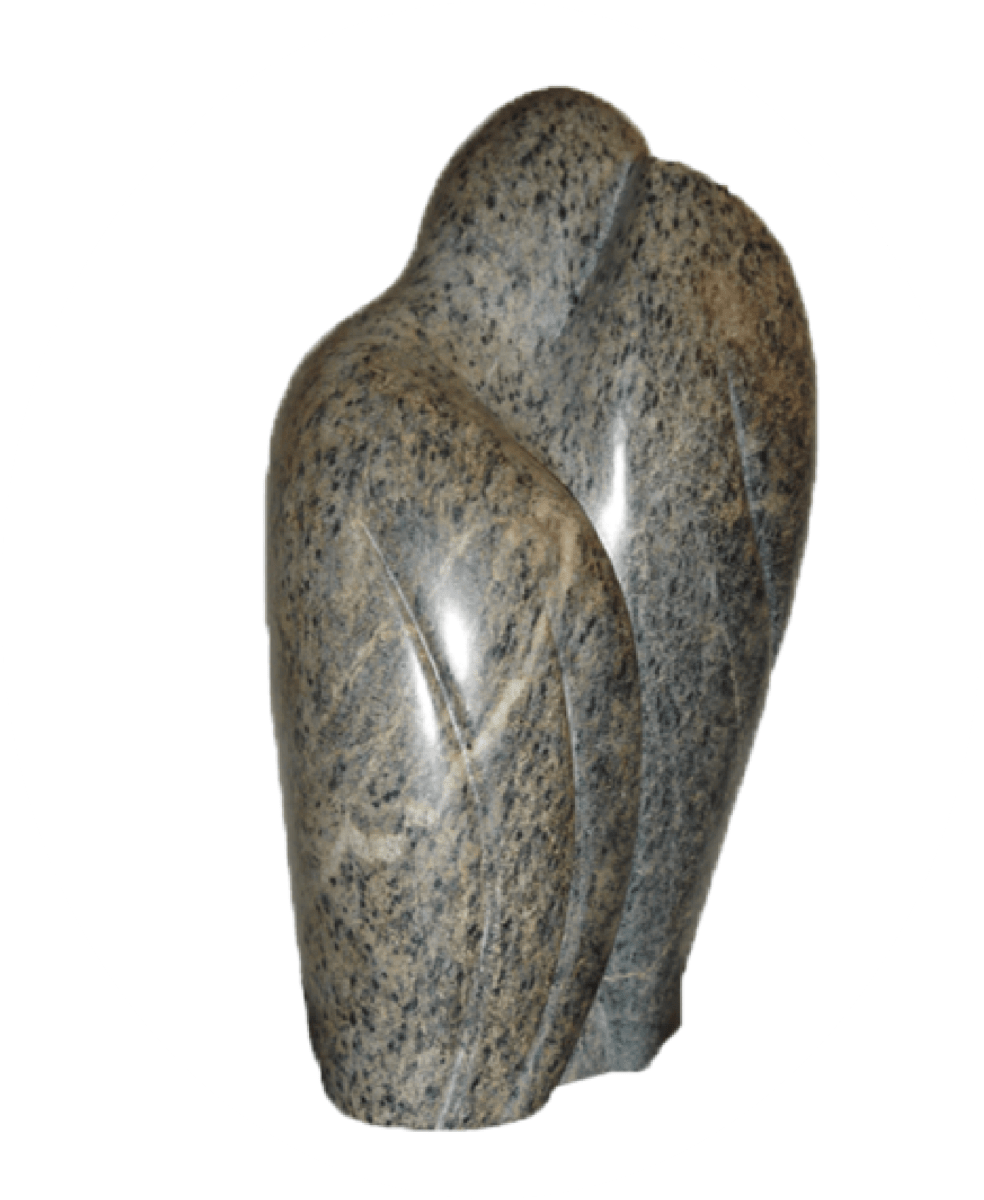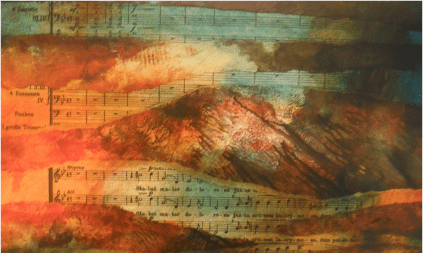Dom Fonteinnes
About the composer
Beforehand: the following text is not about Dom Fonteinnes but about chants. The origin of chant is not known. It seems to have appeared naturally. For centuries no system of notation was developed for this music, and monks learned it orally. In the 8th and 9th century a simple system was developed, where the signs indicate the direction of the melody, but do not define exact pitches or intervals. The majestic solemnity of this music has had a strong influence on European music and still inspires many composers.
Gregorian chants are named after Gregory I (590 – 664). It is the official liturgical music in the roman catholic church, a collection of hundreds of chants for all the days of the church year, assembled in Graduale and Antiphonale. Gregory distributed the chants over the days of the year and revised the melodies so that they were more consistent with the words. Gregorian chant is completely homophonic, it is sung without accompaniment and partly consists of reciting singing (accentus), partly of more melodic, sometimes heavily ornamented lyric (concentus). Another difference is in syllabic chants (each syllable has one tone), neumatic chants (most syllables have 2-3 tones) and melismatic chants (still more ornamentation). In the performance three forms are discerned: responsorial (alternating soloist and choir), antiphonal (alternating two choirs) and cantus in directum, when the chant is sung without interruption, either by the believers, or by a choir.
In the beginning of the 17th century the singing of Gregorian chant deteriorated, for a large part caused by a very mutilating edition that came into print, the Medicea-edition. The Benedictine monks of the abbey in the French village of Solesmes, however, took up a thorough study of all old sources and tried to reconstruct the chants as good as possible. The monk Dom Fonteinnes reconstructed the Stabat Mater chant around 1850. An old source of the Stabat Mater chant can be found in the Maintzesch Gesangbuch from 1661.
In the early years of the twentieth century, after centuries of deterioration, Pope Pius X assigned the Benedictine abbey in Solesmes to assemble the reconstructed chants in an official edition of Gregorian chants, called the Editio Vaticana.
An interesting interpretation of the Gregorian Stabat Mater can be found on CD 4 (see below), sung by Noirin Ni Riain in a way that reminds me strongly of the Irish group Clannad. The song consists of the stanzas 1, 9, 19 and 20 of the “Vatican”-text, and she accompanies herself on a drone.
Another interpretation, quite different, is by the Polish jazz pianist Wlodek Pawlik On Good Friday of the year 2000 a concert was organized where monks and nuns sang the Gregorian chants, while Pawlik added his improvisations. The result has been recorded and can be heard on CD 5, a present from Ignace Verberk. He bought this cd in Krakov, Poland.
The Belgian composer Father Jean-Marie Plum composed an adaptation for organ solo of the plain chant Stabat Mater melody: Introduction, Variations et Final sur le Stabat Mater traditionel.
About the Stabat Mater
| Date: | ca. 1850 |
| Performers: | Male choir (CD 1), Female choir (CD 2), Mixed Choir (CD 3), Female singer (CD 4), Mixed choir (CD 5), Male singers alternating with organ (France, Le Manivelle) (CD 6) |
| Length: | CD 1: 6.25 minutes, CD 2: 5.17 minutes, CD 3: 5.14 minutes, CD 4: 1.38 minutes and CD 5: 6.56 minutes |
| Particulars: | The melody is the same for all three recordings and should be the official one, but the used texts are in fact mixtures of the "Analecta"- and "Vatican"-versions. On the third CD the use of a mixed choir is, in my opinion, not quite as it was originally meant to be sung. The same can be said of the use of a female choir on CD 2 and of the female singer on CD 4. Extraordinary: on CD 6, after stanza 18 the organ is playing the aria Voi que sapete from Mozarts Le Nozze di Figaro! Listen to CD 4 (see at the end of this webpage). |
| Textual variations: | In CD 1 through 5 the text according to "Analecta" is sung, but with following changes: |
| Colour bar: |
|
Information about the recording
| CD1: | Virgin 5 45272 2: Stabat Mater |
| More info: | Four completely different settings of the Stabat Mater. A “must” for every collector. The plain chant Stabat Mater was recorded at the St John-at-Hackney Church, London, in January 1993. In my opinion the best and most original performance: sung by men (as it should) and in a quiet tempo. I bought this CD in a record shop in the Netherlands, 1997. |
| Choir: | Taverner Choir |
| Conductor: | Andrew Parrot |
| Other works: | Giovanni Pierluigi Palestrina, Stabat Mater |
| Code: | 1997 PÄR 01 |
| CD2: | Mitra Cd 16 290: Stabat Mater |
| More info: | Another excursion into the world of Stabat Mater settings. As the CD contains 5 Stabat Mater settings, it should be a “must” for every collector, especially as it has the only Gaffori registration that I know of. Recorded at the St.Martinus church, Euskirchen-Kirchheim, in July 1995. The chant is sung by women and the tempo is to fast for my taste. I bought this CD in a record shop in the Netherlands, 1998. |
| Choir: | Frauenschola des Figural Chores Köln |
| Conductor: | Martina Mailänder |
| Other works: | Giovanni Pierluigi Palestrina, Stabat Mater |
| Code: | 1998 GAF-01 |
| CD3: | Vivarte (Sony Classics) SK 45861: Ave Maris Stella, Marienleben im Choral |
| More info: | An interesting concept: The life of the virgin Maria is followed in plainsong, from the immaculate conception to the ascent in heaven. Recorded at the Ursulinenkloster, Niederaltaich, Bavaria, in November 1989. The chant is sung alternatively by female choir and mixed choir. As in CD 2 the tempo is to fast for my taste, almost with a dancing rhythm. |
| Choir: | Niederaltaicher Scholaren |
| Conductor: | Konrad Ruhland |
| Other works: | Ave Maris Stella |
| Code: | FON-01 |
| CD4: | Sounds True Audio A272: Nóirín Ni Riain, Soundings |
| More info: | A collection of spiritual songs, sung by Noirin Ni Riain in a way that reminds me strongly of the Irish group Clannad. It is preceded by an Ode to Jacopone di Todi, who is, as is widely accepted nowadays, probably not the author of the Stabat Mater poem. Recorded in Dromore House, Newport, Co.Tipperary, Ireland in 1993. I bought this CD in a record shop in the Netherlands, 1999. |
| Soloists: | Nóirín Ni Riain |
| Other works: | Irish traditionals and Gregorian chants |
| Code: | 1999 FON-02 |
| CD5: | Polonia Records CD 263: Misterium Stabat Mater |
| More info: | Another interesting concept: A jazz pianist improvises during the singing of chant, in a candle-lit temple from 1682 resulting in a mixture of a religious meeting and a mystery play. Recorded live at the God’s Mother Sanctuary in Tuchow on Good Friday 2000. I bought this CD on the Internet, Ludwigbeck-online, 2003. |
| Choir: | - Schola Gregoriańska Redemptorystów (Monks from the Congregation of the Holiest Redeemer) - Schola Sióstr Slużebniczek Dębickich (Nuns from the convent of the Servants of the Immaculate Conceived Virgin Mother of God in Tuchów). |
| Soloists: | Wlodek Pawlik, piano |
| Other works: | Ave Maria + Stabant iuxta crucem + Ubi caritas |
| Code: | 2003 FON-03 |
| CD6: | LIDI 0109164-06 Les Chantres et la Manivelle |
| More info: | |
| Orchestra: | Lórgue à manivelle de Saint Chaffrey |
| Choir: | Ensemble Vox Cantoris |
| Other works: | 1 O filii et filae, procession du jour de Pâques, Anonymous, French |
| Code: | FON 04 |
| CD7: | Veni, Sancte Spiritus: Gregorian Chant Hymns & Sequences |
| More info: | The CD was released June 6, 2022, a moving solo, intensely beautiful sung, anonymous Gregorian chant, by Donna Stewart; also a virtually unknown setting, ca. 1500. It is released on a her solo album Veni, Sancte Spiritus, Gregorian Chant, Hymns and Sequences (2022). |
| Soloists: | Donna Stewart, mezzo soprano |
| Other works: | Audi benigne conditor, Salva Festa Dies, Veni, Sancte Spiritus, O fillii en Filliae, Sacris Solemniis, Lauda Sion Salvatorem, Jesu Dulcis Amor Meus, Vexilla Regis, Dies Irae. |
| Code: | MIG - 01 |
Listen





